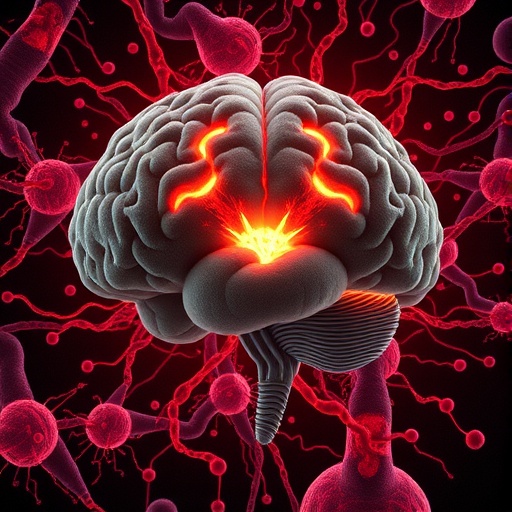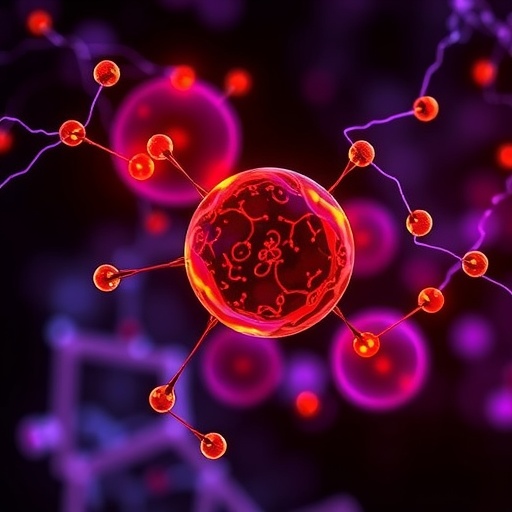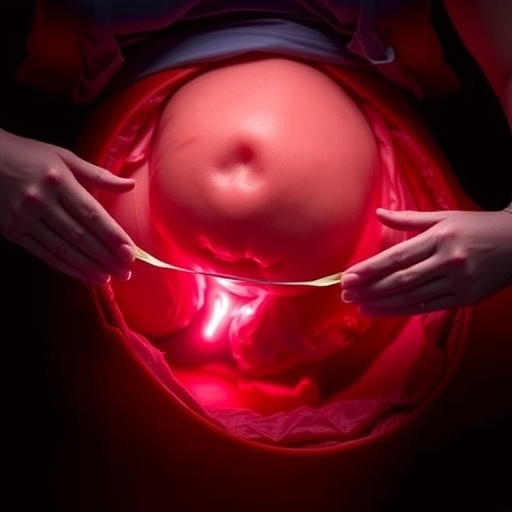In the intricate tapestry of addiction neuroscience, a groundbreaking study now illuminates the molecular underpinnings of how contextual memories related to cocaine use are etched into the brain. Scientists led by Salery, Godino, and Xu have uncovered a remarkable process by which the nucleus accumbens—an essential brain hub implicated in reward and motivation—transcriptionally encodes cocaine-context memories through specific ensembles of neurons marked by the expression of the immediate early gene Arc. This pioneering research, published in Nature Communications, transforms our understanding of the interplay between memory, addiction, and gene expression at the cellular level.
Memory for drug-associated contexts is a powerful driver of relapse in addiction, yet the precise biological signature that maintains these memories was elusive until now. The nucleus accumbens is well-known for its role in reinforcing drug-seeking behavior, but the transcriptional dynamics within its neuronal populations that sustain context-specific drug memories had remained unclear. The study’s revelation that Arc-expressing ensembles capture the transcriptional identity of cocaine-context memories introduces a novel molecular window into the persistent vulnerability toward drug relapse.
By leveraging cutting-edge techniques like single-cell RNA sequencing and multiplexed in situ hybridization, the researchers dissected the molecular diversity of neurons activated in the nucleus accumbens during cocaine-context memory recall. They found that subsets of neurons expressing Arc undergo a distinctive transcriptional program that effectively ‘labels’ the cocaine context in the brain’s memory circuits. This transcriptional signature appears to be not merely a passive marker but a dynamic code sustaining the memory’s stability over time.
.adsslot_WZqArJimQ9{width:728px !important;height:90px !important;}
@media(max-width:1199px){ .adsslot_WZqArJimQ9{width:468px !important;height:60px !important;}
}
@media(max-width:767px){ .adsslot_WZqArJimQ9{width:320px !important;height:50px !important;}
}
ADVERTISEMENT
The Arc gene, traditionally associated with synaptic plasticity and immediate early neuronal activation, emerges as a pivotal orchestrator of long-lasting contextual memory encoding in the context of addiction. Arc’s role extends beyond being a molecular flicker of neural activation—it actively reshapes synaptic connections and chromatin states to consolidate memories. The research demonstrates that Arc-expressing ensembles in the nucleus accumbens bear a transcriptional footprint that uniquely corresponds to cocaine-context associations, distinct from general reward memories or neutral contexts.
In exploring this molecular architecture, the authors deployed behavioral paradigms mimicking human addiction scenarios, such as conditioned place preference, where rodents learn to associate certain environments with the rewarding effects of cocaine. By examining the nucleus accumbens’ neuronal populations during these tasks, the team identified discrete clusters of Arc-positive neurons whose gene expression profiles encode the learned contextual associations with striking specificity. This insight paves the way for mapping how environmental cues imprint on the neural genome to sustain addicted behaviors.
The implications of transcriptionally mapped memory ensembles for addiction neuroscience are profound. They suggest potential molecular targets for interventions aimed at erasing or dampening the pathological memory traces driving relapse. The discovery that Arc ensembles are not monolithic but possess a transcriptional heterogeneity could inform precision medicine approaches, where subpopulations of neurons could be selectively modulated to disrupt maladaptive memories without broadly impairing brain function.
Importantly, this research accentuates the dynamic interplay between experience-driven neural activity and genome-wide transcriptional responses. The data illustrate how environmental experiences—specifically drug-context pairings—trigger tightly coordinated waves of gene expression that sculpt the neural landscape to encode memory. Such insights extend beyond addiction, offering a versatile framework to understand memory encoding in diverse contexts, from learning and memory disorders to psychiatric diseases involving maladaptive salience attribution.
At a technical level, the utilization of high-throughput transcriptional profiling combined with spatial mapping allowed for unprecedented resolution in linking gene expression to defined neuronal ensembles. This approach addressed longstanding challenges in disentangling which cells within heterogeneous brain regions drive specific behaviors. The ability to parse out the molecular identity of context-specific memory ensembles opens exciting avenues for exploring how transcriptional regulation guides neuronal function and plasticity in vivo.
Moreover, the study highlights how transient activation markers like Arc can be harnessed not only to trace circuit dynamics but also to reveal stable, transcriptionally-encoded signatures that underlie persistent behavioral memories. This challenges earlier views of immediate early gene expression as ephemeral snapshots, positioning Arc as a cornerstone in the transcriptional architecture of memory consolidation in the addictive brain.
The authors also discuss the broader epigenetic landscape that may interface with Arc-mediated transcriptional programs. Chromatin remodeling, histone modification, and DNA methylation changes accompanying Arc expression likely contribute synergistically to the maintenance of cocaine-context memory ensembles. Understanding the mechanistic crosstalk between these layers of genomic regulation could inspire innovative therapeutic strategies to reprogram maladaptive memories at their source.
Ultimately, this work sheds critical light on the neurogenomic code underpinning addiction-related memories, positioning Arc-expressing ensembles in the nucleus accumbens as molecular engrams of cocaine-context associations. The fine-grained dissection of these ensembles at the transcriptional level marks a milestone in addiction biology, charting a path toward interventions that could selectively weaken the pathological hold of drug memories—potentially reducing relapse and informing recovery.
As we continue unraveling the complex gene-behavior relationships woven into neural circuits, the identification of Arc ensembles as key players in transcriptionally encoded addiction memories offers a new molecular lexicon to understand and tackle substance use disorders. This discovery emphasizes the brain’s remarkable capacity to translate environmental experiences into enduring genomic signatures, illuminating how memories that fuel addiction are not merely intangible phenomena but biologically inscribed codes subject to manipulation.
Future research inspired by these findings will likely explore how modulating Arc expression or its downstream transcriptional networks affects the stability and expression of drug-context memories. The potential to develop targeted therapies that erase or soften the transcriptional imprint of addictive memories—while preserving overall cognitive functions—represents an exciting frontier in precision psychiatry.
In summary, Salery, Godino, Xu, and colleagues have unveiled a vital molecular mechanism by which cocaine-context memories are transcriptionally sculpted within specific Arc-expressing ensembles in the nucleus accumbens. This landmark study offers a transformative perspective on the genomic imprinting of addictive behaviors, bridging neuroplasticity, transcriptional biology, and memory research. As addiction continues to pose a global public health challenge, such insights are invaluable steps toward effective, molecularly-informed therapeutic breakthroughs.
Subject of Research: Neurogenomic encoding of cocaine-context associative memories in the nucleus accumbens
Article Title: Cocaine-context memories are transcriptionally encoded in nucleus accumbens Arc ensembles
Article References:
Salery, M., Godino, A., Xu, Y.Q. et al. Cocaine-context memories are transcriptionally encoded in nucleus accumbens Arc ensembles. Nat Commun 16, 6084 (2025). https://doi.org/10.1038/s41467-025-61004-9
Image Credits: AI Generated
Tags: addiction and gene expressionArc gene expression in addictioncellular dynamics in addiction neurosciencecocaine addiction neurosciencecocaine-context memory researchdrug-context memory dynamicsinterdisciplinary addiction studiesmolecular mechanisms of drug memoryneuronal populations in addictionnucleus accumbens memory encodingrelapse triggers in drug addictionsingle-cell RNA sequencing in neuroscience





